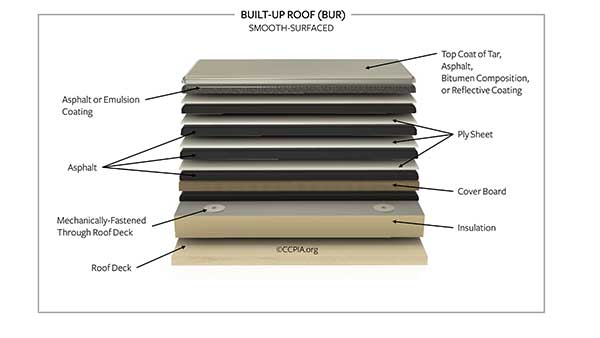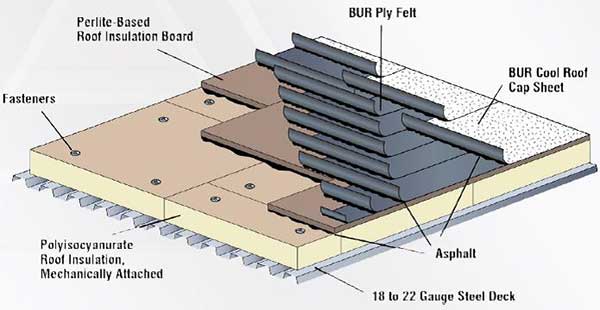Built Up
What is a Built Up Roof?
For buildings with low-slope or flat roofs, a built-up roof system is a popular option. This method, known by the acronym BUR, has been in operation in the United States for over a century. What is it about BUR systems that makes them so popular? Due to their redundant nature, they are noted for offering good protection because they are built up of many layers of ply sheets and asphalt. A cap sheet or a flood coat of asphalt and granules is then applied on top of these layers. Weather resistance and heavy-duty protection for the building are provided by the many plies.

A Built-Up Roof System’s Components
Built-up roofs can be made in a number of different methods. Typically, the built-up roof method begins with a base sheet put atop polyisocyanurate (polyiso) insulation or cover board using mechanical fasteners. The foundation sheet protects the roof system’s bottom layer of waterproofing and provides a surface on which additional sheets can be attached using hot asphalt.
For the installation of reinforcing felt, also known as a ply sheet, a layer of asphalt is put over the base sheet. Many people imagine kettles of hot asphalt being wiped over the foundation sheet to attach the ply sheet, but technological advancements have given us other possibilities. Contractors can utilize cold-applied adhesive solutions instead of hot mopping asphalt and kettles, for example.

The reinforcing felt creates a barrier that provides greater resistance to water incursion when saturated in asphalt or cold-applied adhesive. The process is repeated with the addition of additional plies and the application of asphalt or cold-applied adhesive until the appropriate number of plies is reached. The system is then either capped with a mineral-surfaced cap sheet or topped off by spreading gravel or slag over the top layer of asphalt.
